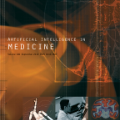
In obstetric ultrasound (US) scanning, the learner's ability to mentally build a three-dimensional (3D) map of the fetus from a two-dimensional (2D) US image represents a significant challenge in skill acquisition. We aim to build a US plane localization system for 3D visualization, training, and guidance without integrating additional sensors. This work builds on top of our previous work, which predicts the six-dimensional (6D) pose of arbitrarily-oriented US planes slicing the fetal brain with respect to a normalized reference frame using a convolutional neural network (CNN) regression network. Here, we analyze in detail the assumptions of the normalized fetal brain reference frame and quantify its accuracy with respect to the acquisition of transventricular (TV) standard plane (SP) for fetal biometry. We investigate the impact of registration quality in the training and testing data and its subsequent effect on trained models. Finally, we introduce data augmentations and larger training sets that improve the results of our previous work, achieving median errors of 3.53 mm and 6.42 degrees for translation and rotation, respectively.
翻译:在产科超声扫描(US)中,学习者从美国二维(2D)图像中建立胎儿三维(3D)地图的能力是获取技能方面的重大挑战。我们的目标是建立一个用于3D视觉化、培训和指导的美国平面本地化系统,但不纳入其他传感器。这项工作以我们先前的工作为基础,预测六维(6D)飞机的任意导向性构成,即利用一个神经神经链回归网络(CNN),将胎儿大脑与正常参考框架相割裂成平面。我们在此详细分析正常胎儿大脑参考框架的假设,并量化其在获取用于胎儿生物测量的转基因(TV)标准平面(SP)方面的准确性。我们调查了注册质量在培训和测试数据中的影响,以及随后对经过培训的模型的影响。最后,我们引入了数据增强和更大的培训组合,改进了我们先前工作的结果,分别实现了3.53毫米和6.42度的中位误差,用于翻译和旋转。



